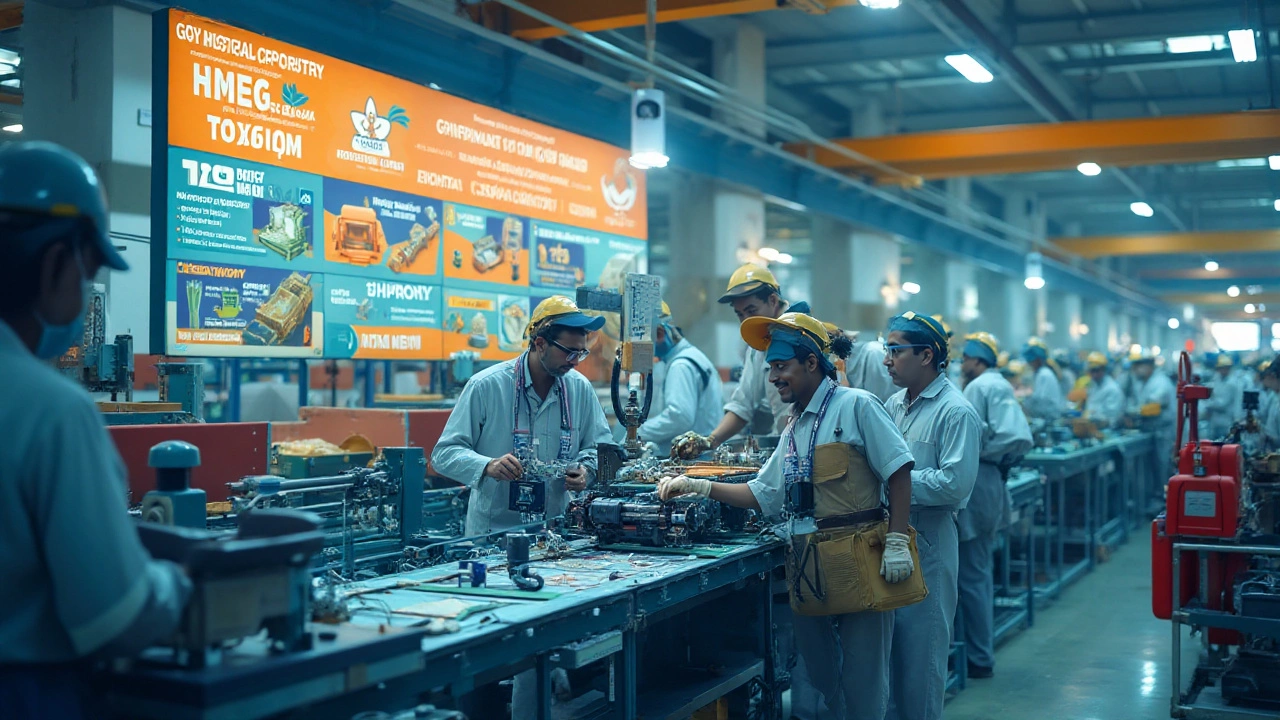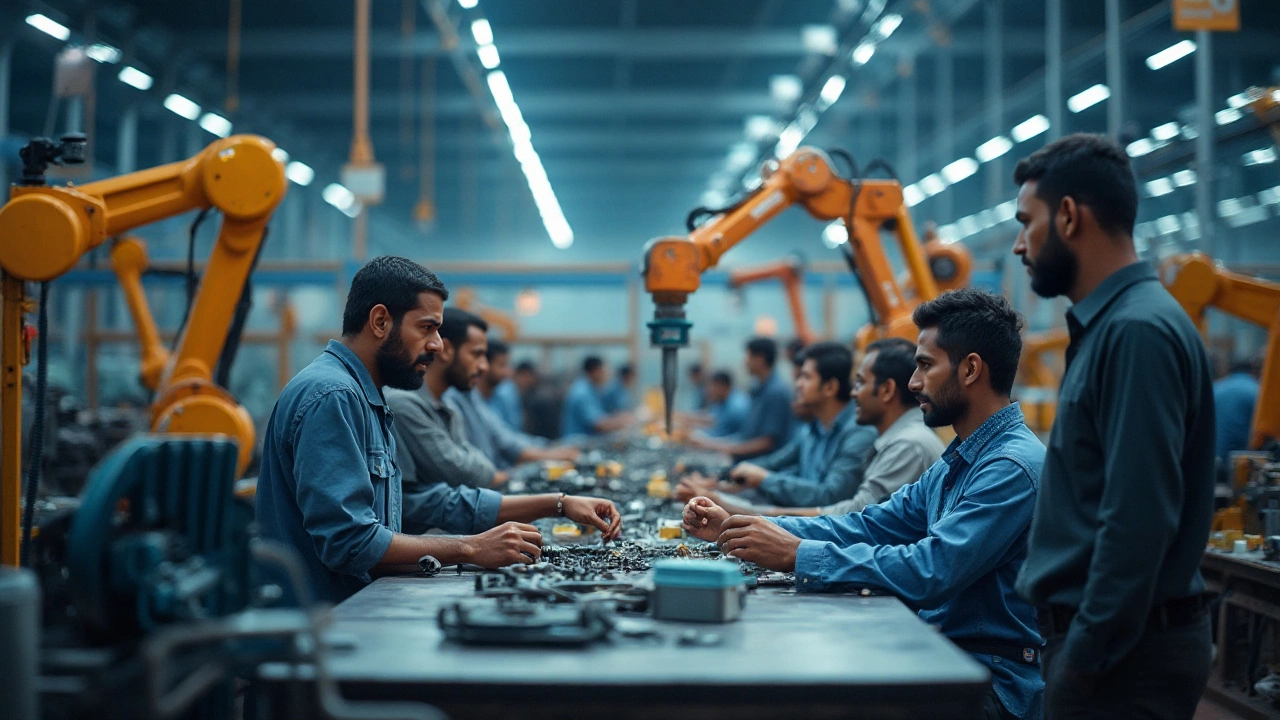Manufacturing in India – What You Need to Know Today
India’s manufacturing sector is moving faster than ever. New tech, shifting supply chains, and government incentives are turning the country into a real production hub. Whether you run a small workshop or a large plant, understanding these shifts can mean the difference between staying stuck and scaling up quickly.
Key Trends Shaping the Sector
First, automation is no longer a buzzword – it’s a daily reality. Robots, IoT sensors, and AI-driven quality checks are cutting waste and boosting output across automotive, pharma, and consumer goods. Second, sustainability is taking center stage. Companies that adopt recycled materials or energy‑efficient processes are winning contracts faster, thanks to stricter regulations and buyer demand. Third, the Make in India program is backing local suppliers with tax breaks and easier customs, which is encouraging foreign players to set up joint ventures rather than import finished goods.
Practical Tips for New Manufacturers
If you’re just starting out, focus on the basics that pay off fast. Map your supply chain to spot bottlenecks – a simple spreadsheet can reveal where delays happen most often. Next, partner with a reliable raw‑material provider; the right polymer or metal supplier can shave days off production and improve product consistency. Finally, invest in training. Even a short workshop on equipment maintenance can slash downtime by 15‑20% and keep your crew safe.
Another useful move is to adopt a modular production layout. By arranging workstations so they can be re‑configured, you can switch between products without major overhauls. This flexibility is especially valuable in a market that favors short runs and custom orders. Keep an eye on government portals for subsidies on energy‑saving machinery – many states offer grants that cover up to 30% of the purchase price.
Don’t overlook digital tools either. A cloud‑based ERP system helps you track inventory, manage orders, and forecast demand in real time. It also makes it easier to share data with partners, which speeds up approvals and reduces paperwork. Most providers offer a free trial, so you can test the fit before committing.
Finally, build a network. Join local industry groups, attend trade fairs, and connect with consultants who specialize in Indian manufacturing. These contacts can alert you to upcoming regulations, new technology pilots, and even potential customers. In a sector where information moves quickly, staying connected is as important as staying efficient.
By keeping an eye on emerging trends, sharpening your operational basics, and leveraging the support available, you can turn today’s challenges into tomorrow’s growth. The manufacturing landscape in India is full of opportunity – all you need is a clear plan and the willingness to act.

Understanding Food Units: Key Concepts for Food Processing and Manufacturing
Find out what food units are, why they matter in food processing, how they impact safety, and get practical tips on their use in daily operations.
Read More
Manufacturing’s Impact: How Government Schemes Shape Our Everyday Life
Manufacturing isn't just about factories and machines—it's the engine behind daily life, jobs, and the stuff we use. This article breaks down how government schemes focused on manufacturing affect the way we live. Get real facts about job creation, innovation, and even unexpected places where these policies show up. Discover tips for families and workers on making the most out of changes in the industry. If you’ve ever wondered why your fridge, car, or phone keeps getting cheaper (or sometimes not), you’ll find answers here.
Read More
Small Scale Production: What Really Happens Step by Step
Curious about small scale production? This article breaks down what goes on behind the scenes, from coming up with an idea to actually getting products out the door. It explains the steps, useful gear, and sneaky pitfalls you probably never thought about. Whether you’re launching a side hustle or tweaking your process, you’ll find practical tips and stories from real creators. Cut through the confusion and pick up tricks to make your next project smoother.
Read More
Manufacturing Money: Is There Real Cash in Government-Backed Production?
This article digs into whether manufacturing is still a goldmine—especially with all the government schemes floating around these days. You'll see what sort of cash flow is actually possible and where the profits really come from. It also uncovers which subsidies or incentives might tip the scales and what pitfalls to dodge. If you’re thinking about getting into manufacturing or just curious, this no-nonsense read clears up the money side fast.
Read More
Cheapest Spots to Build a Factory Right Now
Looking to build a factory without breaking the bank? Some regions not only offer low costs but sweeten the deal with government incentives. This article explores various locations that provide budget-friendly options for factory construction while highlighting government schemes that can maximize savings in the manufacturing sector. Learn how to take advantage of these opportunities and make informed decisions on where to set up your next manufacturing hub.
Read More
Two Key Types of Small Scale Production: A Simple Guide
Small scale production can be a game-changer for those eager to bring unique products to the market without massive investments. It primarily includes job production and batch production. This approach allows for flexibility and creativity, catering to niche markets and customer needs. Discover how such production types can benefit budding entrepreneurs, artisans, and small business owners as they tap into opportunities for innovation and growth.
Read More
Manufacturing's Vital Role in Society
Manufacturing companies play a pivotal role in society by driving economic growth, providing jobs, and fostering innovation. They are at the heart of community development and contribute to infrastructure improvements. Government schemes often support these enterprises, helping them to remain competitive and sustainable. Overall, manufacturing is a cornerstone of both local and global economies.
Read More
Best U.S. States for Manufacturing: Where to Build Your Factory
Choosing the best state for building a factory involves a mix of tax incentives, infrastructure, and workforce availability. Some states offer appealing government schemes, making them hotspots for manufacturers. Proximity to supply chains and market access are also crucial factors. Manufacturing hubs often have robust logistics support. To make an informed decision, weighing economic benefits against geographical location is key.
Read More
How Manufacturing Fuels National Economic Growth
Manufacturing plays a pivotal role in boosting a country's economic stability by creating jobs, enhancing technological advancements, and stimulating investment. Government schemes often act as catalysts by providing incentives and favorable policies to promote industrial growth. The presence of a robust manufacturing sector can help improve infrastructure and increase exports. This article explores the multifaceted ways manufacturing contributes to a nation's well-being and progress.
Read More
Understanding Government's Role in the Manufacturing Sector
Manufacturing is a critical component of any economy, and understanding which government department oversees this sector can influence the effectiveness of related government schemes. This article explores the various government bodies responsible for manufacturing, how they work to promote industry growth, and the significance of these departments in implementing successful economic policies. By understanding the role of government in manufacturing, businesses can better navigate available resources and incentives.
Read More
The Impact of Manufacturing on American Society and Economy
Manufacturing drives innovation, supports a resilient supply chain, and creates economic opportunities across the United States. As a crucial sector, manufacturing shapes society by stimulating technological advancements and fostering job creation. Government initiatives play a significant role in facilitating growth and addressing emerging challenges in this domain. Discover the multifaceted contributions of manufacturing to American society and the economy.
Read More